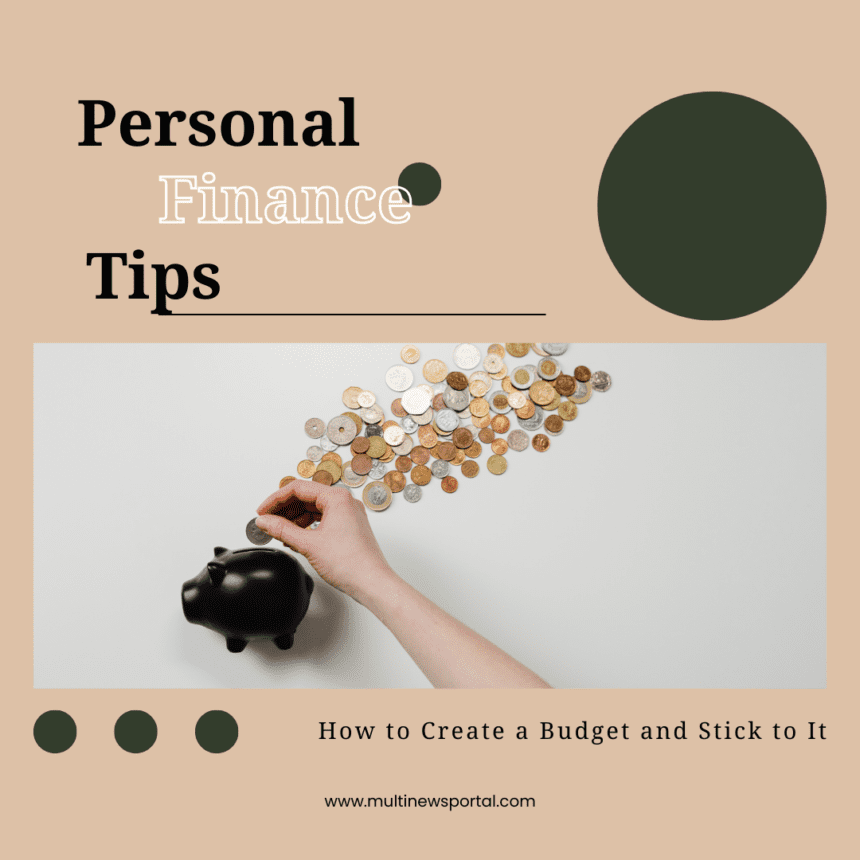Budgeting is a critical component of effective personal finance and allows you to take control of your money. When crafted thoughtfully, a budget outlines your income, organizes your expenses, and helps you align spending with financial goals. Despite the many benefits, sticking to a budget is challenging for most people. This comprehensive guide provides practical steps for creating a realistic budget along with actionable strategies for maintaining discipline. By dedicating time upfront to build a system that works for your lifestyle, you can overcome obstacles and form lasting budgeting habits.
How to Create a Budget
The first key step is to determine your total net monthly income. Account for all sources of income, including your salary, freelance work, investment returns, and any other steady cash inflows. Be sure to subtract out taxes, insurance, 401k contributions, and any other payroll deductions to arrive at the exact amount available to budget each month.
Next, split expenses into three categories:
Fixed Expenses These remain relatively consistent month-to-month and include necessities like:
- Rent or mortgage
- Car payment(s)
- Minimum debt payments
- Utilities
- Mobile phone bill
- Internet and cable
- Insurance premiums
- Gym membership
- Streaming services
Variable Expenses Spending here fluctuates based on lifestyle and choices. Common examples are:
- Groceries
- Gasoline
- Dining out
- Entertainment, hobbies, and leisure activities
- Miscellaneous personal care or household items
Savings Goals It’s vital to pay yourself first via savings and investments. Target an amount aligned with your goals, which may include:
- Emergency fund
- Retirement
- Down payment on a house
With categories established, create a budget spreadsheet to easily track your plan versus actual spending. Use columns for budgeted amounts per category and actual amounts based on expenditures. Display each month across rows. Integrate formulas to quickly tally category and overall monthly totals.
Compare your budget targets to recent bank and credit card statements to set realistic targets. Keep fixed costs constant but leave some wiggle room in variable categories for unexpected expenses. Automate transfers into separate savings accounts so those goals are directly funded each month.
How to Stick to Your Budget
Once the framework is set, shift focus to execution. Sticking to a budget requires discipline along with some key strategies:
Automate Everything Possible Your budget loses effectiveness if managing it feels like a burden. Eliminate effort by automating:
- Fixed expense payments via online banking
- Variable expense contributions to designated accounts or cash envelopes
- Payroll deductions and direct deposits for goals like retirement accounts
Review and Reconcile Weekly Despite best-laid plans, you may still overspend within certain categories. Comb through transactions weekly and reconcile budgeted versus actual amounts in each bucket. Identify problem areas immediately rather than letting discrepancies accumulate.
Hold Yourself Accountable
Avoid beating yourself up if you veer off track. We all slip up. Instead, course correct by reducing another category to compensate for overages elsewhere. Keep budget integrity intact by sticking to the original bottom-line target. Consider sharing budget oversight with your spouse or trusted friend. Social accountability helps motivation.
Build Your Emergency Fund ASAP
Having cash reserves prevents budget sabotage when unexpected expenses arise. Target saving enough to cover 3-6 months’ worth of fixed costs. Once your emergency fund reaches the target, divert contributions toward other financial goals.
Re-Evaluate Quarterly Revisiting income and expenses every 3 months ensures your budget evolves with life changes. Job shifts, pay raises, or altering requirements around saving for a house down payment will necessitate number tweaking. Don’t just sit and forget!
Tips for Staying On Budget
Beyond foundational planning and tracking, utilizing additional strategies keeps spending in check:
- Meal plan and prep make-at-home meals
- Pack lunch rather than eat out
- Create sinking funds for known irregular expenses like car repairs or medical bills
- Scale back non-essential categories like entertainment if needed
- Use cash to increase mindfulness around spending habits
- Develop hobbies focused on experiences rather than material goods
- Explore free local events for date nights or family time
The Benefits of Budgeting Add Up
Committing to an intentional budget system pays dividends beyond saving money:
- Reduces financial stress and arguments over money
- Accelerates paying off debt
- Achieves milestones like home ownership faster
- Gains control over your financial trajectory
- Enables generosity through charitable giving
The sense of confidence and security after meeting goals will keep you motivated to adhere to your budget.
Conclusion
Learning how to create a budget may seem intimidating. But once established, the systematized approach pays dividends toward achieving your dreams and living without monetary worries. Automate tracking, hold yourself accountable, and build savings buffers to master budget discipline over the long haul. Gradually, the initial habits form routine patterns that stick for good. Just take it step-by-step and stay focused on your motivations behind budgeting to maintain dedication over time. You’ve got this!
How to Create a Budget
- Determine monthly net income
- Categorize expenses
- Make budget spreadsheet
- Set realistic targets
Tips for Staying on Budget
- Meal plan and prep at home
- Pack lunch rather than eat out
- Create sinking funds for irregular expenses









